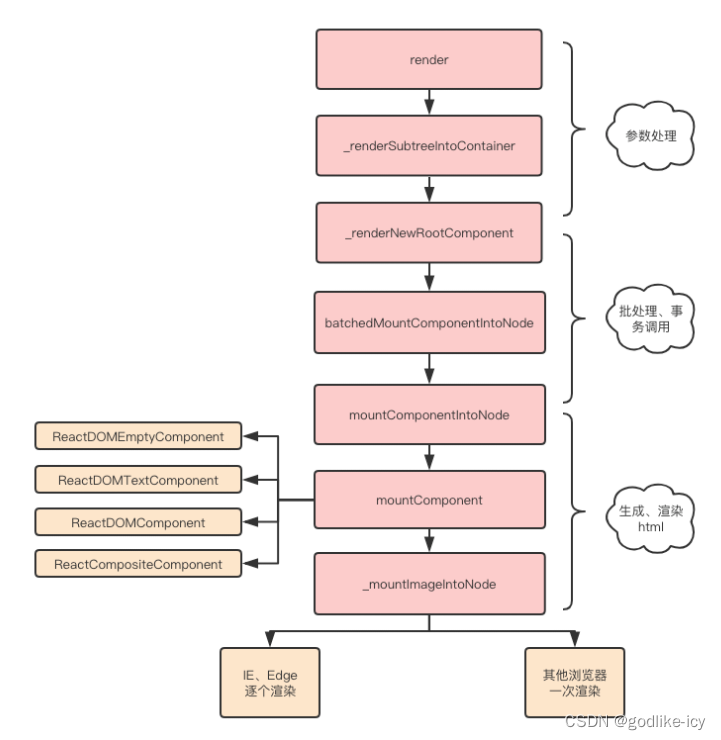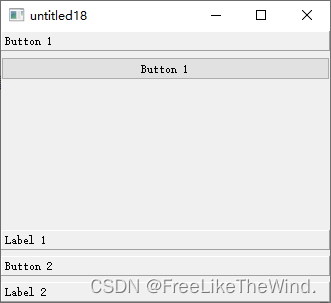目录
- 什么是跨域
- springboot是怎么解决跨域问题
- 在springSecurity中怎么解决跨域问题
- CORS源码
- 跨域请求伪造CSRF
- CSRF源码
- 总结
什么是跨域
跨域是指在网络中,当一个网页的资源(如字体、脚本或样式表)尝试从不同的域名、端口或协议请求数据时,会遇到安全限制问题。这是由于浏览器的同源策略所导致的。同源策略要求网页只能从同一域名下加载资源,而跨域请求则违反了这个策略。
为了解决跨域问题,可以采取一些方法,如使用JSONP、CORS、代理服务器等。JSONP是通过动态创建
总结起来,跨域是指在网络中由于浏览器的同源策略而限制了不同域名、端口或协议之间的资源请求。通过使用适当的跨域解决方案,可以允许跨域请求并获取所需的数据。一般情况下我们呢都是使用CORS(跨域资源共享)来解决跨域问题。
springboot是怎么解决跨域问题
在Java中,可以使用CORS(跨域资源共享)来解决跨域问题。下面是一个Java代码示例,演示如何在Spring Boot应用程序中配置CORS。
首先,在Spring Boot应用程序的配置类中添加以下代码:
import org.springframework.context.annotation.Configuration;
import org.springframework.web.servlet.config.annotation.CorsRegistry;
import org.springframework.web.servlet.config.annotation.WebMvcConfigurer;@Configuration
public class CorsConfig implements WebMvcConfigurer {@Overridepublic void addCorsMappings(CorsRegistry registry) {registry.addMapping("/**").allowedOrigins("http://example.com") // 允许的跨域请求来源.allowedMethods("GET", "POST") // 允许的请求方法.allowedHeaders("Origin", "Content-Type", "Accept") // 允许的请求头.allowCredentials(true); // 允许发送身份凭证}
}
在上述代码中,我们通过 addMapping() 方法指定了允许跨域请求的路径,使用 allowedOrigins() 方法指定了允许的跨域请求来源,使用 allowedMethods() 方法指定了允许的请求方法,使用 allowedHeaders() 方法指定了允许的请求头。最后,通过 allowCredentials(true) 方法允许发送身份凭证(如Cookie)。
以上只是个代码示例,实际使用时要根据具体情况做响应配置。
在springSecurity中怎么解决跨域问题
在Spring Security中,你可以使用 CorsConfigurationSource 接口来配置CORS(跨域资源共享)策略。下面是一个Java代码示例,演示如何在Spring Security中配置CORS。
首先,在你的Spring Security配置类中添加以下代码:
import org.springframework.context.annotation.Bean;
import org.springframework.context.annotation.Configuration;
import org.springframework.web.cors.CorsConfiguration;
import org.springframework.web.cors.CorsConfigurationSource;
import org.springframework.web.cors.UrlBasedCorsConfigurationSource;@Configuration
public class SecurityConfig extends WebSecurityConfigurerAdapter {@Overrideprotected void configure(HttpSecurity http) throws Exception {http.cors();// ...}@Beanpublic CorsConfigurationSource corsConfigurationSource() {CorsConfiguration configuration = new CorsConfiguration();configuration.setAllowedOrigins(Arrays.asList("http://localhost:8080"));configuration.setAllowedMethods(Arrays.asList("GET", "POST"));configuration.setAllowedHeaders(Arrays.asList("Authorization", "Cache-Control", "Content-Type"));UrlBasedCorsConfigurationSource source = new UrlBasedCorsConfigurationSource();source.registerCorsConfiguration("/**", configuration);return source;}
}
在上述代码示例中,我们通过调用 http.cors()> 方法来允许跨域请求。然后,我们定义了一个 CorsConfigurationSource 的Bean,用于配置CORS策略。在这个Bean中,我们设置了允许的跨域请求来源、允许的请求方法和请求头。
最后,我们使用 UrlBasedCorsConfigurationSource 类来注册CORS配置,并将其应用于所有的请求路径( /** )。
CORS源码
源码入口:
public CorsConfigurer<HttpSecurity> cors() throws Exception {return getOrApply(new CorsConfigurer<>());}private <C extends SecurityConfigurerAdapter<DefaultSecurityFilterChain, HttpSecurity>> C getOrApply(C configurer)throws Exception {C existingConfig = (C) getConfigurer(configurer.getClass());if (existingConfig != null) {return existingConfig;}//执行configurerreturn apply(configurer);}
可以看到最终就是获取一个CorsConfigurer类,我们看CorsConfigurer类的逻辑。主要看CorsConfigurer类的configure()方法
@Overridepublic void configure(H http) {ApplicationContext context = http.getSharedObject(ApplicationContext.class);//获取corsFilter过滤器CorsFilter corsFilter = getCorsFilter(context);Assert.state(corsFilter != null, () -> "Please configure either a " + CORS_FILTER_BEAN_NAME + " bean or a "+ CORS_CONFIGURATION_SOURCE_BEAN_NAME + "bean.");//把corsFilter过滤器添加到过滤器链中http.addFilter(corsFilter);}
获取corsFilter过滤器并把它添加到过滤器链中。看getCorsFilter(context)方法
private CorsFilter getCorsFilter(ApplicationContext context) {if (this.configurationSource != null) {return new CorsFilter(this.configurationSource);}//corsFilter过滤器bean是否存在boolean containsCorsFilter = context.containsBeanDefinition(CORS_FILTER_BEAN_NAME);if (containsCorsFilter) {return context.getBean(CORS_FILTER_BEAN_NAME, CorsFilter.class);}//corsConfigurationSource对象是否存在boolean containsCorsSource = context.containsBean(CORS_CONFIGURATION_SOURCE_BEAN_NAME);if (containsCorsSource) {//把corsConfigurationSource对象塞进CorsFilter过滤器中CorsConfigurationSource configurationSource = context.getBean(CORS_CONFIGURATION_SOURCE_BEAN_NAME,CorsConfigurationSource.class);return new CorsFilter(configurationSource);}boolean mvcPresent = ClassUtils.isPresent(HANDLER_MAPPING_INTROSPECTOR, context.getClassLoader());if (mvcPresent) {return MvcCorsFilter.getMvcCorsFilter(context);}return null;}
可以看到,对应cors处理有两种情况,
- 没有配置corsConfigurationSource对象,直接使用默认的corsFilter过滤器
- 配置corsConfigurationSource对象,把配置corsConfigurationSource对象添加到默认的过滤器。
最后是调用的springWeb的CorsFilter,并把此过滤器加入到SpringSecurity过滤器链中。
跨域请求伪造CSRF
跨域请求伪造(Cross-Site Request Forgery,CSRF)是一种安全漏洞,攻击者利用该漏洞通过伪造请求来执行未经授权的操作。在CSRF攻击中,攻击者诱使受害者在已登录的状态下访问恶意网站,从而触发受害者在其他网站上的操作,如转账、更改密码等。
在前后端分离的架构中,可以使用CSRF令牌(CSRF Token)来验证请求的合法性。下面是一个使用Spring Security防止CSRF攻击的Java代码示例:
- 配置Spring Security启用CSRF保护:
@Configuration
@EnableWebSecurity
public class SecurityConfig extends WebSecurityConfigurerAdapter {@Overrideprotected void configure(HttpSecurity http) throws Exception {http// 其他Spring Security配置.and().csrf().csrfTokenRepository(CookieCsrfTokenRepository.withHttpOnlyFalse());}
}
- 在前端页面中设置CSRF令牌:
html
<html>
<body><form method="post" action="/submit"><input type="hidden" name="${_csrf.parameterName}" value="${_csrf.token}" /><!-- 其他表单字段 --><button type="submit">提交</button></form>
</body>
</html>
在上述示例中,首先通过 csrf() 方法启用了CSRF保护,并使用 CookieCsrfTokenRepository 来存储CSRF令牌。然后,在前端页面的表单中,通过 ${_csrf.parameterName} 和 ${_csrf.token} 获取CSRF令牌,并将其作为隐藏字段传递给服务器。
这样,在每次提交表单时,CSRF令牌会被包含在请求中,服务器会验证请求中的CSRF令牌是否与服务器生成的令牌匹配,从而防止CSRF攻击的发生。
CSRF源码
代码入口:
public CsrfConfigurer<HttpSecurity> csrf() throws Exception {ApplicationContext context = getContext();return getOrApply(new CsrfConfigurer<>(context));}private <C extends SecurityConfigurerAdapter<DefaultSecurityFilterChain, HttpSecurity>> C getOrApply(C configurer)throws Exception {C existingConfig = (C) getConfigurer(configurer.getClass());if (existingConfig != null) {return existingConfig;}//执行configurerreturn apply(configurer);}
主要是看CsrfConfigurer这个类
public final class CsrfConfigurer<H extends HttpSecurityBuilder<H>>extends org.springframework.security.config.annotation.web.configurers.AbstractHttpConfigurer<CsrfConfigurer<H>, H> {//初始化CsrfTokenRepository,默认为LazyCsrfTokenRepositoryprivate CsrfTokenRepository csrfTokenRepository = new LazyCsrfTokenRepository(new HttpSessionCsrfTokenRepository());默认是使用LazyCsrfTokenRepository,并使用HttpSessionCsrfTokenRepository初始化。接下俩看CsrfConfigurer的configure方法。
@Overridepublic void configure(H http) {//初始化CsrfFilter过滤器CsrfFilter filter = new CsrfFilter(this.csrfTokenRepository);RequestMatcher requireCsrfProtectionMatcher = getRequireCsrfProtectionMatcher();if (requireCsrfProtectionMatcher != null) {filter.setRequireCsrfProtectionMatcher(requireCsrfProtectionMatcher);}AccessDeniedHandler accessDeniedHandler = createAccessDeniedHandler(http);if (accessDeniedHandler != null) {filter.setAccessDeniedHandler(accessDeniedHandler);}org.springframework.security.config.annotation.web.configurers.LogoutConfigurer<H> logoutConfigurer = http.getConfigurer(org.springframework.security.config.annotation.web.configurers.LogoutConfigurer.class);if (logoutConfigurer != null) {logoutConfigurer.addLogoutHandler(new CsrfLogoutHandler(this.csrfTokenRepository));}org.springframework.security.config.annotation.web.configurers.SessionManagementConfigurer<H> sessionConfigurer = http.getConfigurer(org.springframework.security.config.annotation.web.configurers.SessionManagementConfigurer.class);if (sessionConfigurer != null) {sessionConfigurer.addSessionAuthenticationStrategy(getSessionAuthenticationStrategy());}filter = postProcess(filter);//加载到过滤器链中http.addFilter(filter);}
这段很简单,初始化CsrfFilter,并把CsrfFilter添加到过滤器链中。
在LazyCsrfTokenRepository中,就是对CsrfToken的操作
public interface CsrfTokenRepository {/*** Generates a {@link CsrfToken}* @param request the {@link HttpServletRequest} to use* @return the {@link CsrfToken} that was generated. Cannot be null.*/CsrfToken generateToken(HttpServletRequest request);/*** Saves the {@link CsrfToken} using the {@link HttpServletRequest} and* {@link HttpServletResponse}. If the {@link CsrfToken} is null, it is the same as* deleting it.* @param token the {@link CsrfToken} to save or null to delete* @param request the {@link HttpServletRequest} to use* @param response the {@link HttpServletResponse} to use*/void saveToken(CsrfToken token, HttpServletRequest request, HttpServletResponse response);/*** Loads the expected {@link CsrfToken} from the {@link HttpServletRequest}* @param request the {@link HttpServletRequest} to use* @return the {@link CsrfToken} or null if none exists*/CsrfToken loadToken(HttpServletRequest request);}
具体的实现类就不展开说,感兴趣的可自行查看代码。
总结
- 跨域问题:当前端应用和后端API不在同一个域下时,浏览器会限制跨域请求。为了解决跨域问题,可以在后端配置允许跨域请求的头信息,如Access-Control-Allow-Origin。
- CSRF保护:跨站请求伪造(CSRF)是一种安全漏洞,攻击者利用用户在其他网站上的身份信息发起恶意请求。为了防止CSRF攻击,可以在Spring Security中启用CSRF保护。通过生成和验证CSRF令牌,确保请求的合法性。
- 在后端配置中启用CSRF保护,并指定CSRF令牌的存储方式,如CookieCsrfTokenRepository。
- 在前端发起请求时,将CSRF令牌作为请求的参数或头信息的一部分发送给后端。
- 后端服务器验证请求中的CSRF令牌是否与服务器生成的令牌匹配,以确保请求的合法性。






